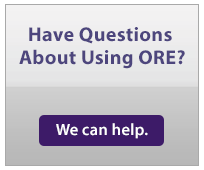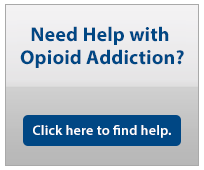The Risks and Consequences of Polysubstance Use (Podcast) Transcript
The Risks and Consequences of Polysubstance Use (Podcast) Transcript
- Length: 4:44
This program is presented by the Centers for Disease Control and Prevention.
Speaker: My name is Jeff Gibbons. And today I’m talking with Shannon Cassius. We’re going to talk about the risks and consequences of mixing drugs. Shannon is an epidemiologist with the Centers for Disease Control and Prevention’s Division of Overdose Prevention. Today, we’ll discuss why it’s dangerous to mix drugs in general. We’ll also discuss the dangers of mixing specific types of drugs, using alcohol with other drugs, and how to recognize the signs of a drug overdose. Shannon, welcome.
Shannon: Thank you for having me.
Speaker: Let’s jump right in. Can you tell us about the dangers of using more than one drug at a time?
Shannon: Use of more than one drug, also known as polysubstance use, is common. This includes when two or more drugs are taken together or within a short time period, either intentionally or unintentionally. Whether intentional or not, mixing drugs is never safe because the effects from combining drugs may be stronger and more unpredictable than one drug alone and even deadly.
Speaker: Shannon, why might some people mix drugs?
Shannon: People may take a drug to increase or decrease the effects of a different drug, or because they want to experience the effects of the combination. When speaking directly with people who use drugs, some communicated that they use multiple drugs to have fun, escape reality, be more social, and to deal with trauma, stress, and mental health issues.
Speaker: It sounds like mixing drugs can be quite common. Are there different risks when mixing different kinds of drugs?
Shannon: I want to reiterate that mixing drugs is never safe. When we talk about mixing certain types of drugs, each of those combinations can have its own set of dangerous risks and consequences. For example, mixing stimulants like ecstasy and cocaine increases the risk of stroke and heart attack while mixing opioids with depressants like benzos and or alcohol can slow breathing, which may lead to severe brain damage or even death. Mixing stimulants and depressants doesn’t balance or cancel them out. In fact, the results of combining drugs are unpredictable, often modifying or even masking the effects of one or both drugs. This may trick you into thinking that the drugs are not affecting you, making it easier to overdose and drinking alcohol while using other drugs also isn’t safe. Alcohol is a depressant with similar effects to other downers. Mixing alcohol with other drugs can increase your risk of overdose and serious damage to the brain, heart, and other organs.
Speaker: That’s quite the list of negative consequences. Are there ways to protect yourself from the dangers of mixing drugs?
Shannon: There is no way to protect yourself from the dangers of mixing drugs. You won’t always know how your body will react to a mixture of drugs, even if you’ve done it before. Also, drugs affect every person differently, so your experience might be very different from someone else’s. There’s just no way of knowing how your body will react each time.
Speaker: You said that even if you’ve mixed certain drugs before, you still wouldn’t always know how your body will react. Can you develop a tolerance to a drug?
Shannon: Those who use drugs regularly can develop a tolerance for the drug, meaning that they require larger doses to get the same effects. But tolerance can disappear as quickly as it is formed. So even after a brief period of abstinence tolerance can lessen and put a person at greater risk for overdose if they relapse and go back to the same dose of a drug they used before they stopped. Also, your tolerance to drugs can change from day to day, so you can’t ever predict the outcome.
Speaker: What should I do if I think someone is overdosing?
Shannon: Call 911. If you think someone is overdosing and if you aren’t sure whether someone has overdosed, it is best to treat the situation like an overdose. You could save a life. So, what are the signs of an overdose? Here are seven signs to look for: small, constricted pinpoint pupils falling asleep or losing consciousness, slow, weak or no breathing, choking or gurgling sounds, limp body cold and clammy skin, or discolored skin, especially in the lips and nails. Also, if you have naloxone, you should use it on the person who is overdosing and stay with them until emergency help comes. Naloxone is a non-addictive lifesaving medication that can reverse an opioid overdose, but only if given in time. Naloxone won’t harm someone if they’re overdosing on drugs other than opioids. So, it’s always best to use if you think someone is overdosing. Medical professionals can then take over inside if more than one dose is needed for stronger opioids like fentanyl.
Speaker: Thank you so much for your time today. For more information and resources about the consequences of mixing drugs and how to protect yourself or a loved one, visit cdc.gov/stop overdose.
Speaker: The most accurate health information, visit cdc.gov or call one 800 CDC info.
« Back to The Risks and Consequences of Polysubstance Use (Podcast)

